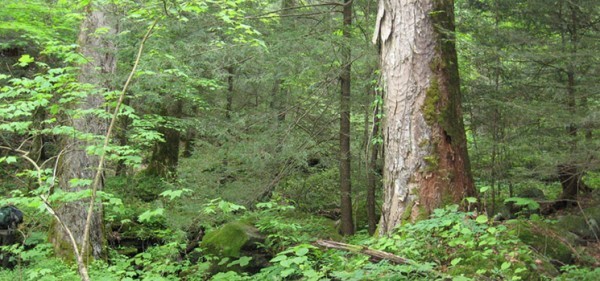While the New Jersey bill failed, it is going to be discussed in New Jersey’s Senate Environment Committee on Monday, January 30, 2012. The discussion is not yet over regarding New Jersey’s public forests.
The discussion about ecosystem productivity over time also continues in the forum of the Native Tree Society. Specifically, this post was picked up here. Dr. Lee Frelich, director of the Center for Forest Ecology at the University of Minnesota and active contributor to the Native Tree Society, reminded me/us that ecosystems do experience retrogression. Ecosystem retrogression is the concept that “ecosystem properties such as net primary productivity, decomposition, and rates of nutrient cycling undergo substantial declines“.
Dr. Frelich explained the concept in many ways, including:
“Returning to the issue of increasing carbon storage in older forests, inevitably, if old forests continue to accumulate C, especially in the soil, it will lead to a high C:N ratio and other effects that will stall increased production, and without rejuvenating disturbance, in many cases to ecosystem retrogression. This might take hundreds of years (especially in northern hardwoods), so for now, many forests will continue to increase carbon, an important ‘transient’ dynamic”
I have a tendency to forget about this concept. One of the first papers describing ecosystem retrogression that I recall was the work of Peter Vitousek at Hawaii. In a wonderfully designed study, it was shown that ecosystems do regress over the course of thousands of years. This time scale slips my mind when thinking about old-growth forests and forest management.
Dr. Frelich pointed out a newer study summarizing our knowledge of ecosystem retrogression that surveyed multiple ecosystems. The concept seems to apply to most ecosystems over the course of thousands of years.
I followed up Dr. Frelich’s post by asking, might “the application of the information on ecosystem regression to forest management go something like: ecological justification for logging a forest to ‘save its health’ (prevent ecosystem regression) is on the order of every 100-150 years or less in the absence of fire in boreal systems and on the order of several hundred years to thousands of years for temperate forest types?”
Dr. Frelich responded by saying that “rejuvenating disturbance is necessary at much longer intervals to prevent retrogression. However, I am not sure that logging would be a good agent to prevent retrogression.”
So, yes, ecosystems do regress and decline in productivity. Except for boreal forests with balsam fir, this happens at time scales that are 3-6 times the typical longevity of most trees (200-300 years).
BTW, check out the discussion on the NTS board. Finer points and clarifications of the ecosystem retrogression concept are on-going.

